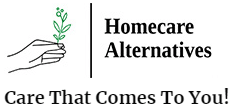In the realm of caregiving, especially when working with the elderly, the ability to forge a meaningful connection is as crucial as the physical care provided. It’s an art form that blends compassion, patience, and genuine interest in improving the lives of others. For caregivers, making a great impression and establishing a strong bond with elderly clients is not just about fulfilling job requirements; it’s about creating a nurturing environment that enhances the quality of life for those in their care.
The journey of connection begins with the first meeting. This initial encounter sets the tone for the entire caregiving relationship. A caregiver who arrives punctually, dressed appropriately, and greets their client with a warm smile and gentle handshake has already taken the first step towards building trust. The way a caregiver introduces themselves, speaking clearly and at a comfortable volume, can immediately put an elderly client at ease. Using formal titles unless invited to do otherwise shows respect and acknowledges the client’s life experience.
However, first impressions are just the beginning. The foundation of any strong relationship is effective communication. For caregivers working with the elderly, this means more than just exchanging information. It involves speaking clearly without shouting, using simple language that avoids medical jargon, and most importantly, practicing active listening. Giving clients the time and space to express themselves, without interruption, validates their thoughts and feelings. It’s about being fully present in the conversation, using non-verbal cues like eye contact and nodding to show engagement.
Respect for personal space and boundaries is paramount in caregiving. Elderly clients, especially those receiving care in their own homes, may feel vulnerable. A considerate caregiver always asks permission before entering rooms or handling personal belongings. They knock before entering, even if the door is open, and are mindful of cultural or religious customs regarding physical contact. This respect extends to allowing clients to make decisions about their environment and daily routines whenever possible, fostering a sense of control and dignity.
Building a genuine connection goes beyond professional duties. It involves taking the time to know the client as a person, not just a care recipient. Caregivers who show interest in their clients’ life experiences, career, family, and hobbies create opportunities for meaningful conversations. Listening to stories with genuine interest and asking follow-up questions not only helps in understanding the client better but also makes them feel valued and heard. Sharing appropriate personal anecdotes can further strengthen this bond, creating a two-way relationship based on mutual understanding and respect.
Reliability and trustworthiness are cornerstones of a strong caregiving relationship. Consistently arriving on time, following through on promises, and being honest about capabilities build a foundation of trust. Maintaining confidentiality and keeping clients informed about any changes in schedules or care plans demonstrates professionalism and respect for the client’s right to be involved in their own care decisions.
While providing necessary care, it’s crucial to encourage independence. A skilled caregiver finds the delicate balance between offering assistance and promoting autonomy. This might involve encouraging clients to perform tasks they’re capable of doing themselves, offering choices in daily activities, and respecting their decisions. Celebrating small accomplishments reinforces a sense of capability and self-worth in elderly clients.
Engaging in meaningful activities together can significantly strengthen the bond between caregiver and client. Whether it’s participating in a favorite hobby, reading together, helping with technology to connect with family, or simply going for a walk, shared experiences create lasting connections. For clients with cognitive decline, activities like looking at old photos or discussing past experiences can be particularly beneficial, tapping into long-term memories and providing comfort.
The role of a caregiver often requires immense patience and understanding, especially when dealing with the challenges of cognitive decline or health issues. Remaining calm in frustrating situations, trying to understand the underlying reasons for challenging behaviors, and using appropriate techniques for clients with conditions like dementia are essential skills. It’s equally important for caregivers to recognize their own emotional needs, taking breaks when necessary and seeking support or additional training when facing difficulties.
Maintaining a positive attitude can significantly impact a client’s mood and overall well-being. Greeting each day with enthusiasm, using appropriate humor to lighten the mood, and focusing on abilities rather than limitations can create a more positive care environment. Providing encouragement and celebrating small victories contribute to a nurturing atmosphere that promotes emotional well-being alongside physical care.
As every client is unique and needs may change over time, successful caregiving requires continual learning and adaptation. Staying informed about medical conditions, being open to feedback, and regularly communicating with family members or other healthcare providers ensures that care remains tailored to the client’s evolving needs.
In essence, building a strong connection with an elderly client is a dynamic process that combines professional skills with emotional intelligence and genuine compassion. It’s about seeing beyond the role of caregiver and client to recognize the shared humanity in each interaction. By approaching their role with dedication, empathy, and respect, caregivers can create positive, impactful relationships that not only enhance the quality of life for their clients but also bring profound meaning to their own work. In the end, it’s these connections that transform caregiving from a job into a calling, enriching the lives of both the caregiver and the cared-for in immeasurable ways.


 RSS - Posts
RSS - Posts